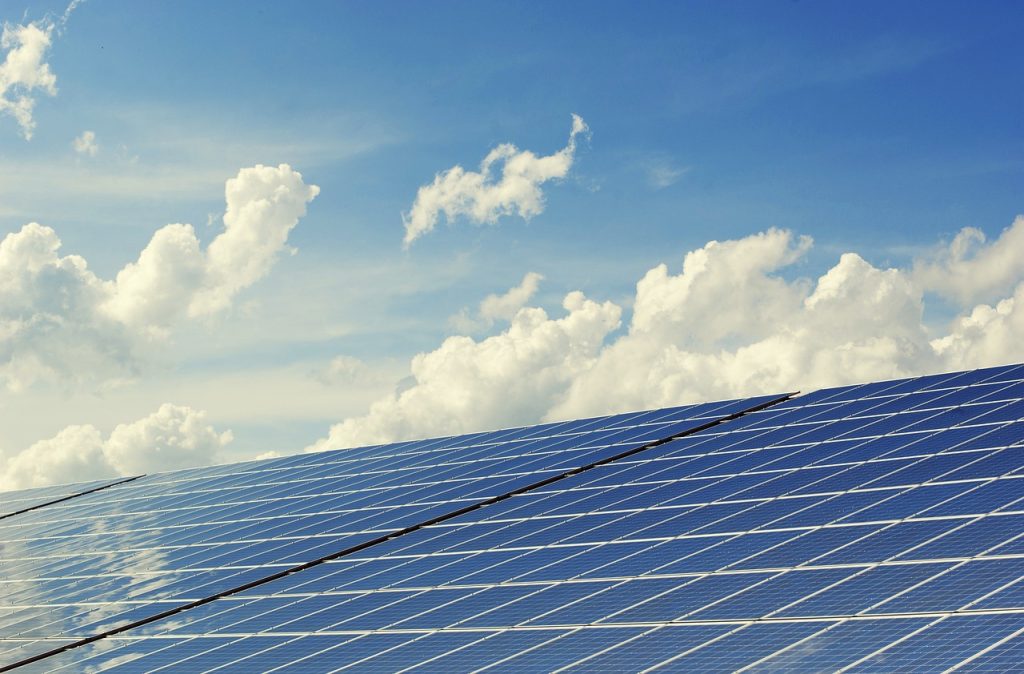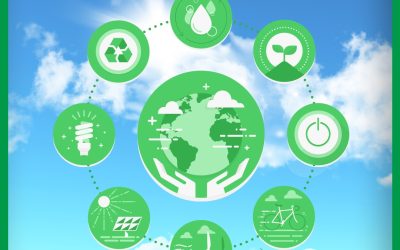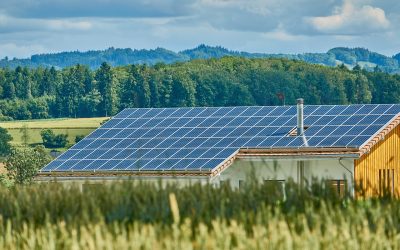Solar power systems are known for their highly efficient generation of electricity, thanks to their minimal energy loss. These systems utilize the sun’s abundant and renewable energy to produce clean and sustainable power. Unlike traditional fossil fuel-based power plants, solar power systems are designed to harness the sun’s rays through photovoltaic panels, ensuring a significantly lower loss of energy throughout the process. With their ability to convert sunlight into electricity in an environmentally friendly way, solar power systems have emerged as a promising solution to combat climate change and reduce our dependence on non-renewable energy sources.
Types of Solar Power Systems
Photovoltaic Systems
Photovoltaic (PV) systems are the most common type of solar power systems used today. These systems utilize solar panels made up of photovoltaic cells, which convert sunlight directly into electricity. When sunlight hits the PV cells, it excites the electrons in the cells, generating a flow of electricity. PV systems are typically used for generating electricity in residential and commercial settings.
Solar Thermal Systems
Solar thermal systems, also known as solar water heating systems, use the sun’s energy to heat water or other fluids for domestic, commercial, or industrial use. These systems typically consist of solar collectors, a storage tank, and a circulating pump. The solar collectors absorb heat from the sun and transfer it to the water or fluid, which can then be used for various heating purposes.
Concentrated Solar Power Systems
Concentrated Solar Power (CSP) systems use mirrors or lenses to concentrate sunlight onto a focal point, where it is used to generate heat or electricity. These systems can use different technologies, such as parabolic troughs, solar towers, or dish/Stirling systems. The concentrated sunlight is used to heat a working fluid, which then drives a turbine to generate electricity. CSP systems are often used in large-scale solar power plants.
Factors Affecting Efficiency
Temperature
The efficiency of solar power systems can be affected by temperature. High temperatures can cause a decrease in the efficiency of photovoltaic cells, reducing the amount of electricity generated. This is known as the temperature coefficient of efficiency. Solar thermal systems, on the other hand, can benefit from higher temperatures, as the heat transfer process is more efficient.
Solar Angle and Intensity
The angle at which sunlight hits the solar panels or collectors can affect the efficiency of solar power systems. The optimum angle varies depending on the geographic location and time of year. Additionally, the intensity of sunlight, which is affected by factors such as weather conditions and the time of day, can also impact the efficiency of solar power systems.
Dust and Dirt
Accumulation of dust and dirt on the surface of solar panels or collectors can reduce their efficiency by blocking the sunlight and reducing the amount of light reaching the active components. Regular cleaning and maintenance are essential to maximize the efficiency of solar power systems.
Shading
Shading on solar panels or collectors can significantly impact the efficiency of solar power systems. When a part of the system is shaded, it decreases the overall energy output. It is important to design solar power installations in a way that minimizes shading from nearby structures, trees, or other objects.
Mismatched Panels
The use of mismatched panels, either in terms of different makes or models, or panels with different power ratings, can reduce the overall efficiency of a solar power system. Mismatched panels may generate different amounts of electricity, and this can lead to power losses. It is crucial to ensure uniformity and compatibility among the panels in a system to optimize efficiency.
Wiring Losses
Wiring losses refer to the energy losses that occur during the transmission of electricity from solar panels or collectors to the inverter or storage system. These losses can be minimized by using proper-sized wires, avoiding long wire runs, and employing efficient wiring techniques.

Energy Conversion Process
Photovoltaic Effect
The photovoltaic effect is the process by which photovoltaic cells convert light energy into electrical energy. When photons from sunlight hit the PV cells, they transfer energy to the electrons in the cells, causing them to move and generate an electric current. This conversion process is what allows photovoltaic systems to produce electricity.
Thermal Conversion Process
Solar thermal systems rely on the thermal conversion process to utilize the sun’s heat energy. Solar collectors capture sunlight and heat a working fluid, such as water or oil. This heated fluid is then used for various heating applications, such as domestic hot water, space heating, or industrial processes. The thermal conversion process does not involve the direct generation of electricity but instead harnesses heat for practical use.
Concentration and Conversion
Concentrated solar power systems utilize concentration techniques to intensify the sunlight falling on a specific area. Mirrors or lenses focus the sunlight onto a smaller area, increasing the intensity of the heat or light and enabling more efficient conversion. The concentrated sunlight is then converted into electricity or used for direct heating, depending on the specific CSP technology being employed.
Energy Loss in Photovoltaic Systems
Inherent Material Losses
A certain amount of energy is lost within photovoltaic systems due to the inherent characteristics of the materials used in the solar panels. This includes losses in the absorption and conversion of sunlight into electricity, as well as losses in the collection and transmission of the generated electricity.
Reflection and Transmission Losses
When sunlight hits a solar panel, some of it is reflected off the surface, and some is transmitted through the material without being absorbed. These reflection and transmission losses can reduce the overall energy conversion efficiency of the photovoltaic system. Advanced materials and coatings are being developed to minimize these losses and enhance the performance of solar panels.
Temperature-Related Losses
Solar panels can experience a decrease in efficiency as their temperature increases. This is due to the temperature coefficient of efficiency, which varies depending on the specific type of solar panel. Higher temperatures can cause a decrease in the voltage and current output of the panels, resulting in decreased energy production.
Wiring and Electrical Losses
The wiring and electrical components used in photovoltaic systems can introduce losses during the transmission of electricity. Resistance in the wires and electrical connections can lead to voltage drops and energy losses. Proper installation and sizing of these components, as well as regular maintenance, can help minimize these losses.

Energy Loss in Solar Thermal Systems
Heat Losses
Solar thermal systems can experience heat losses during the transfer of heat from the solar collectors to the working fluid. These losses occur due to factors such as conduction, convection, and radiation. Insulation and efficient heat transfer mechanisms are utilized to minimize these losses and improve the overall efficiency of the system.
Thermal Conduction and Convection Losses
Conduction and convection losses can occur when heat is transferred from the solar collectors to the storage tank or the fluid being heated. These losses can result from poor insulation or inefficient heat transfer mechanisms. By optimizing the design and components of solar thermal systems, the conduction and convection losses can be reduced, maximizing the energy conversion efficiency.
Radiation Losses
Radiation losses happen when heat is radiated from the surface of the solar collectors. These losses depend on factors such as the design and materials of the collectors, as well as the temperature differential between the collectors and the surrounding environment. Minimizing radiation losses involves using selective coatings, reflective materials, and efficient insulation.
Thermal Storage Losses
In solar thermal systems that incorporate thermal storage, there can be losses in the stored heat over time. These losses occur due to factors such as the thermal conductivity of the storage medium and the insulation properties of the storage tank. Improving the thermal storage technology and using high-quality insulation can help minimize these losses and enhance the overall efficiency of the system.
Energy Loss in Concentrated Solar Power Systems
Optical Losses
Optical losses refer to the energy losses that occur due to imperfections or inefficiencies in the optical components of concentrated solar power systems. This includes losses in the reflection, refraction, and absorption of sunlight by the mirrors or lenses used for concentration. Advanced optical materials and designs are being developed to reduce these losses and improve system performance.
Heat Losses
Heat losses in concentrated solar power systems can occur during the transfer of concentrated sunlight to the working fluid. These losses can result from factors such as conduction, convection, and radiation. Optimizing the heat transfer mechanisms and using efficient materials can help minimize these losses and maximize the energy conversion efficiency.
Thermal Storage Losses
Some concentrated solar power systems incorporate thermal energy storage to ensure continuous power generation, even during periods of low sunlight intensity. Thermal storage losses can occur during the storage and retrieval of the heat energy, as well as through the insulation of the storage tanks. Innovations in thermal energy storage technologies are focused on minimizing these losses and improving the overall efficiency of the system.

Efficiency Improvement Techniques
Advanced Materials and Technologies
Advancements in materials and technologies play a crucial role in improving the efficiency of solar power systems. This includes the development of more efficient solar cells, coatings, and optical materials for improved light absorption and conversion. Further research and innovation in this field promise to enhance the overall performance of solar power systems.
Tracking Systems
Solar tracking systems are designed to maximize the exposure of solar panels or collectors to sunlight by continuously adjusting their position to face the sun. This helps optimize the amount of sunlight captured and increases the overall energy output of the system. Various tracking systems, such as single-axis and dual-axis trackers, are utilized to improve the efficiency of solar power systems.
Optimizing System Design
Efficient system design is crucial for maximizing the efficiency of solar power systems. This includes considering factors such as panel orientation, tilt angle, and spacing to ensure optimal sunlight exposure. Additionally, proper sizing of components, such as inverters and wiring, contributes to minimizing energy losses and improving overall system performance.
Regular Maintenance and Cleaning
Regular maintenance and cleaning are essential for maintaining the efficiency of solar power systems. This includes inspecting and maintaining the structural integrity of the panels or collectors, checking for any shading or obstructions, and ensuring proper cleaning to remove dust, dirt, and debris. By keeping the system well-maintained, energy losses can be minimized, and the system’s efficiency can be preserved.
New Developments in Solar Power
Perovskite Solar Cells
Perovskite solar cells are a promising new development in photovoltaic technology. These cells are made of perovskite materials, which exhibit high light absorption and efficient charge transport properties. Perovskite solar cells have the potential to achieve higher conversion efficiencies and lower production costs compared to traditional silicon-based solar cells.
Tandem Solar Cells
Tandem solar cells, also known as multi-junction solar cells, are designed to increase the efficiency of photovoltaic systems by combining different types of solar cells with varying absorption properties. By using multiple layers of different materials, tandem solar cells can capture a broader spectrum of sunlight and convert it into electricity more efficiently.
Solar Skin Technology
Solar skin technology aims to integrate solar panels seamlessly into the design of buildings and structures. This involves developing solar panels with customizable colors, patterns, and textures that can match or blend with the surrounding surfaces. Solar skin technology not only enhances the aesthetic appeal of solar panels but also expands their application in various architectural designs.
Applications of Solar Power Systems
Residential Solar Power Systems
Residential solar power systems are installed on rooftops or in standalone arrays to generate electricity for household consumption. These systems can significantly reduce or eliminate the need for grid-supplied electricity, leading to lower energy bills and a smaller carbon footprint. Residential solar power systems often utilize photovoltaic technology and can be connected to the electric grid or operate independently as off-grid systems.
Commercial and Industrial Solar Power Systems
Commercial and industrial solar power systems are used by businesses and industries to generate electricity or heat for their operations. Large-scale installations of photovoltaic or solar thermal systems can provide significant savings on energy costs and reduce reliance on traditional grid-supplied power. These systems can be integrated into the existing infrastructure of commercial and industrial buildings.
Off-Grid Solar Power Systems
Off-grid solar power systems are designed to operate independently of the electric grid, providing electricity in remote or rural areas where grid connectivity is limited or unavailable. These systems commonly include a combination of solar panels, batteries for energy storage, and inverters for converting DC power to AC power. Off-grid systems are often used in areas without access to reliable electricity, providing a clean and sustainable energy solution.
Solar Power Plants
Solar power plants are large-scale installations that generate electricity from solar energy and supply it to the electric grid. These plants utilize photovoltaic or concentrated solar power technologies to convert sunlight into electricity on a massive scale. Solar power plants contribute to the reduction of greenhouse gas emissions and promote the transition to clean and renewable energy sources.
Conclusion
Solar power systems offer a sustainable and environmentally friendly solution for generating electricity and heat. While these systems have minimal energy loss, various factors can affect their efficiency, including temperature, solar angle and intensity, dust and dirt, shading, mismatched panels, and wiring losses. Understanding these factors and implementing efficiency improvement techniques can help maximize the performance of solar power systems. With ongoing advancements in materials, technologies, and innovative developments such as perovskite solar cells and solar skin technology, the future of solar power looks promising. From residential installations to large-scale solar power plants, solar energy continues to play a crucial role in our transition towards a greener and more sustainable future.










